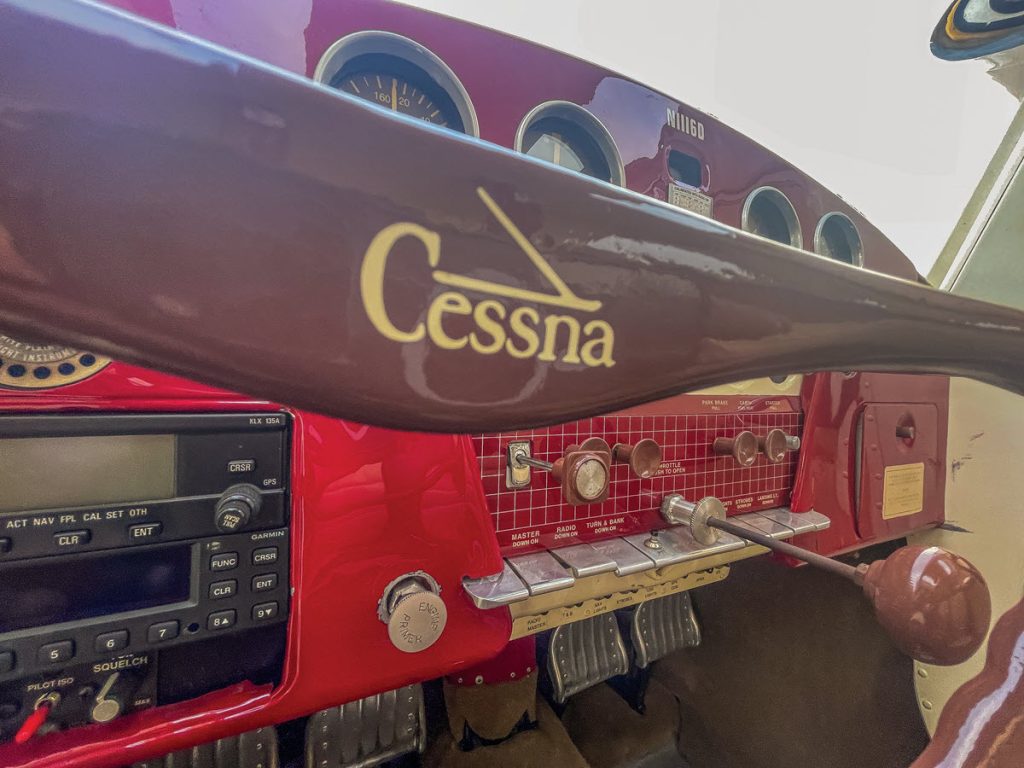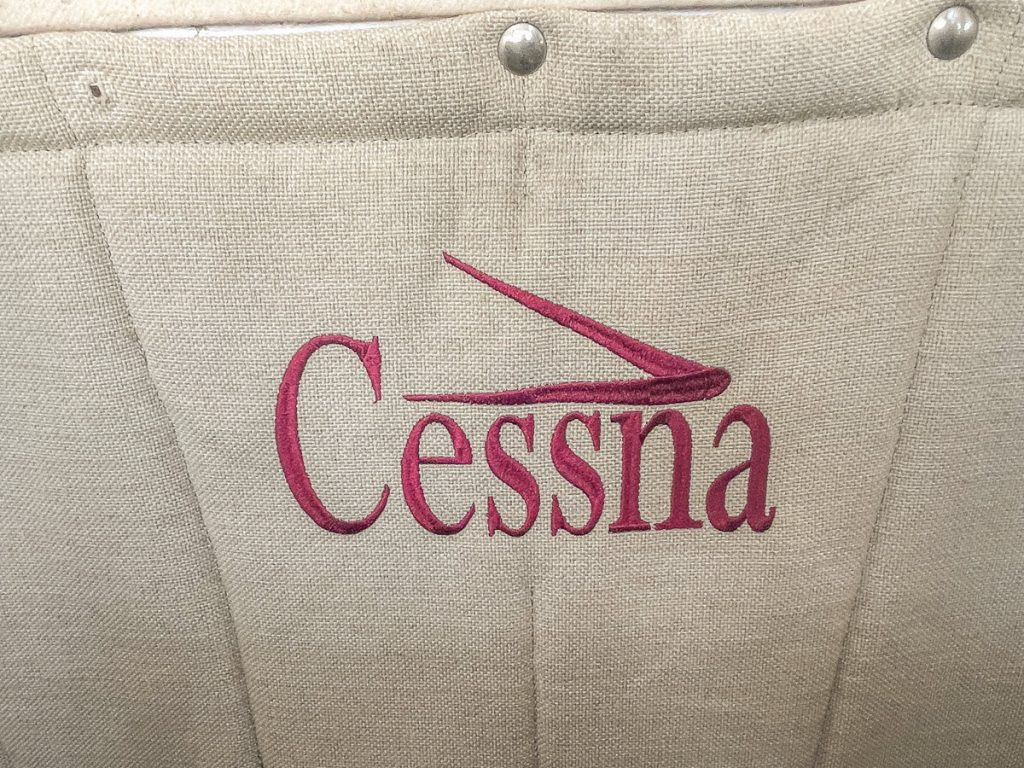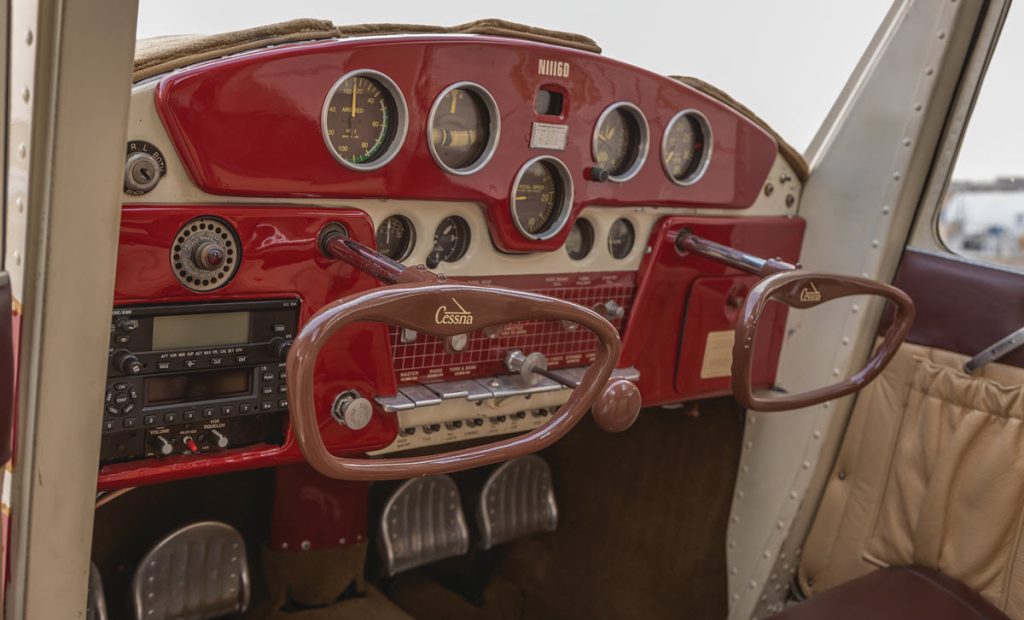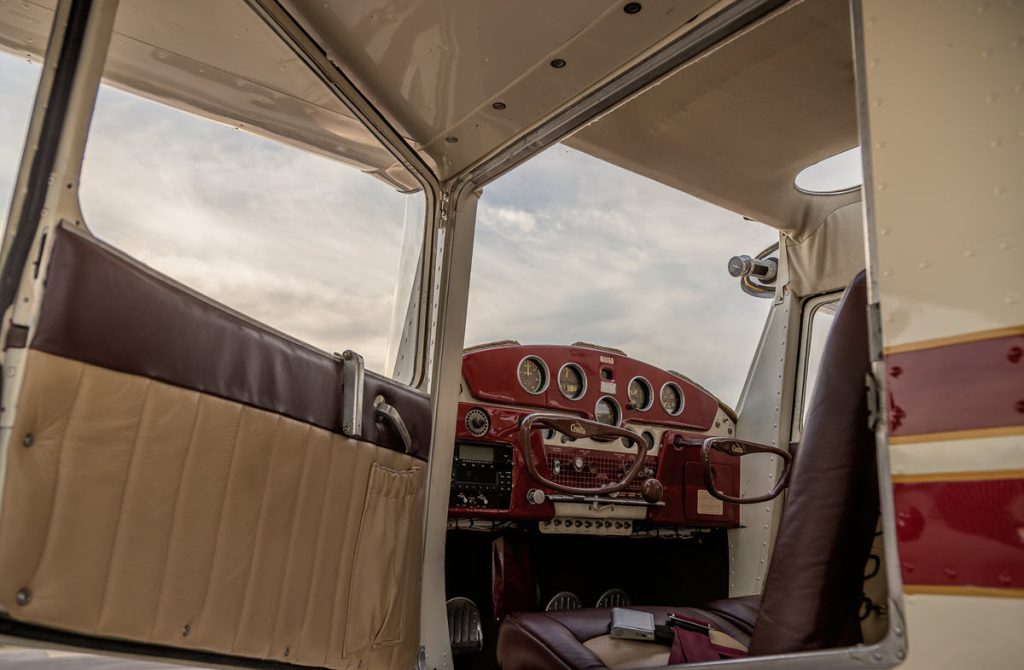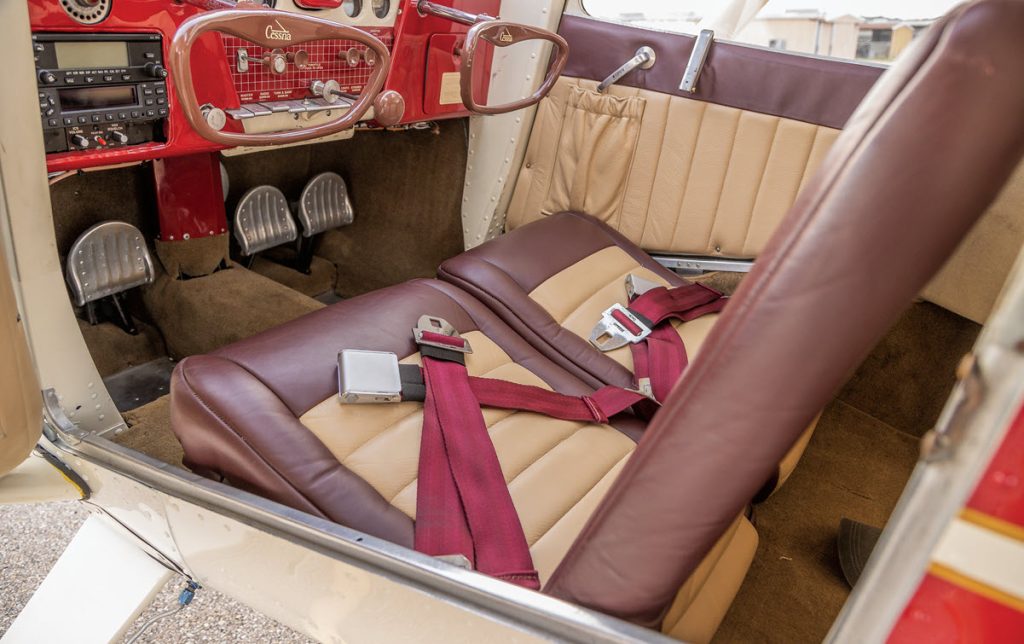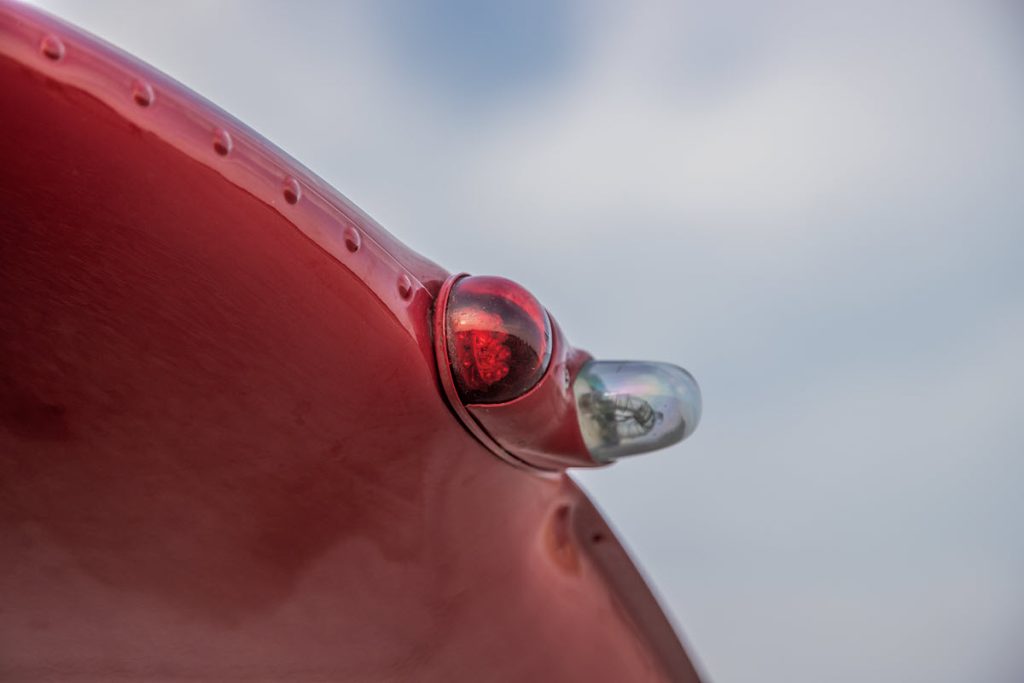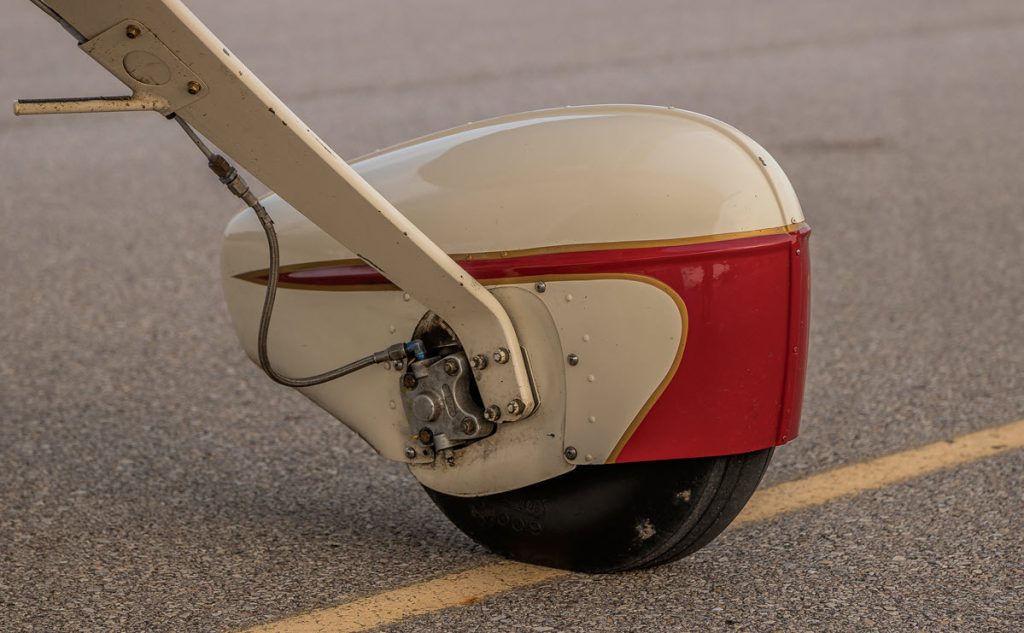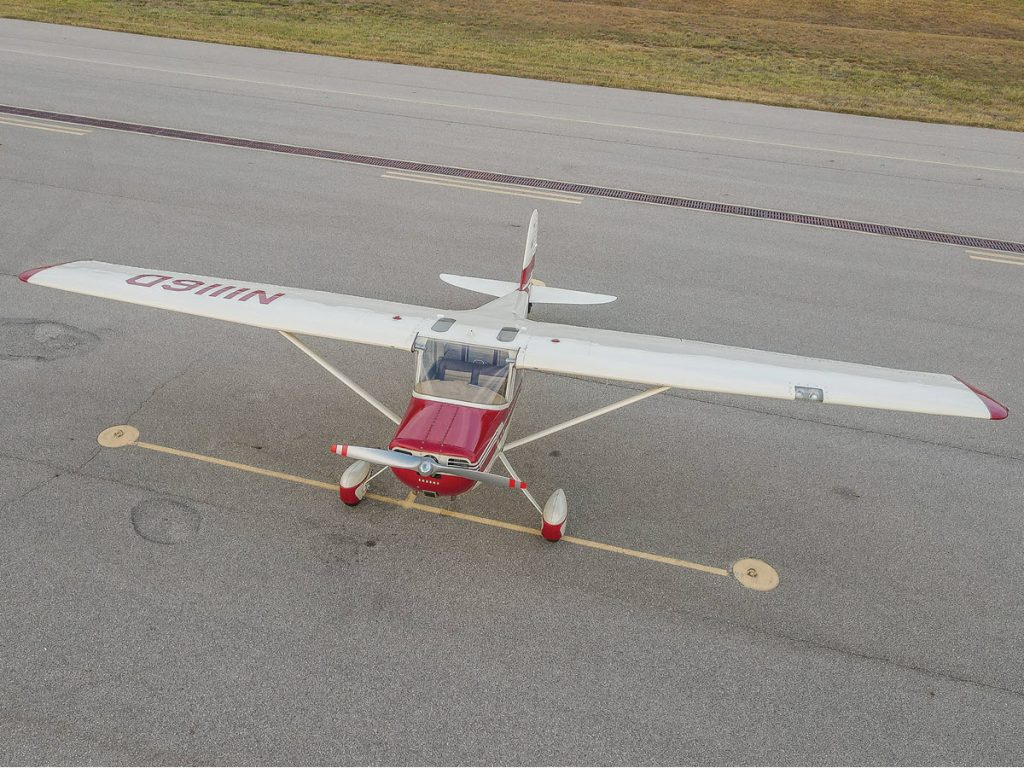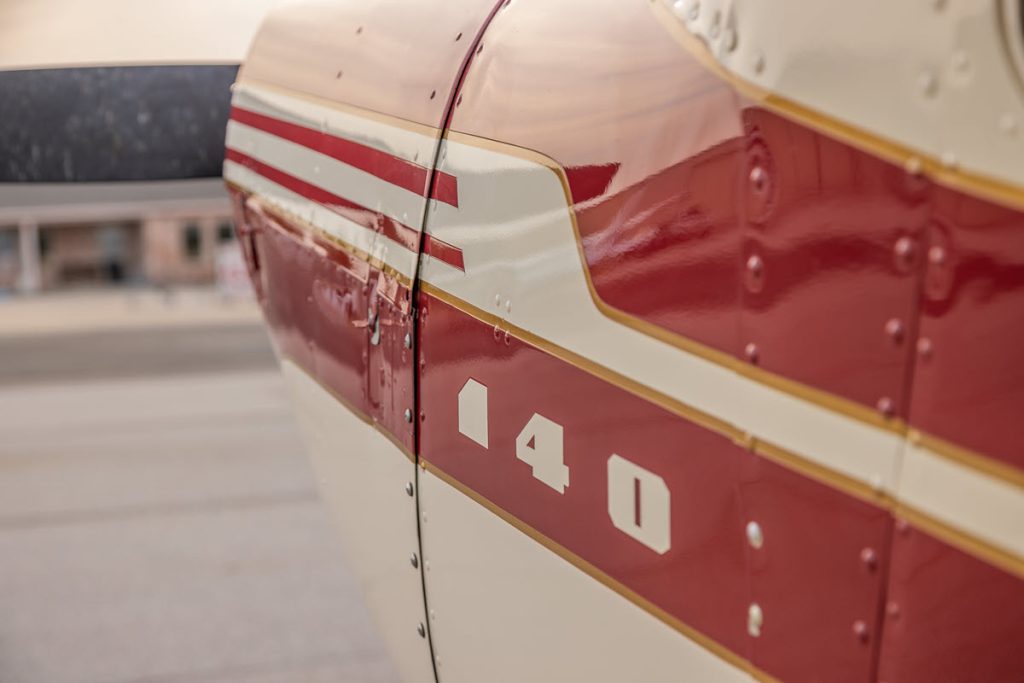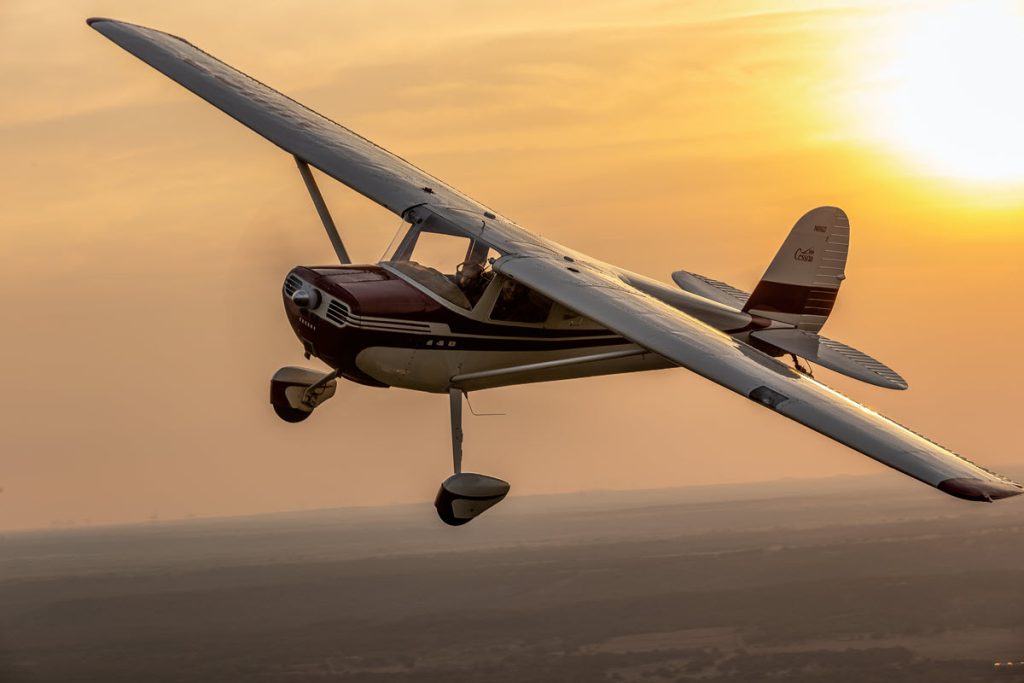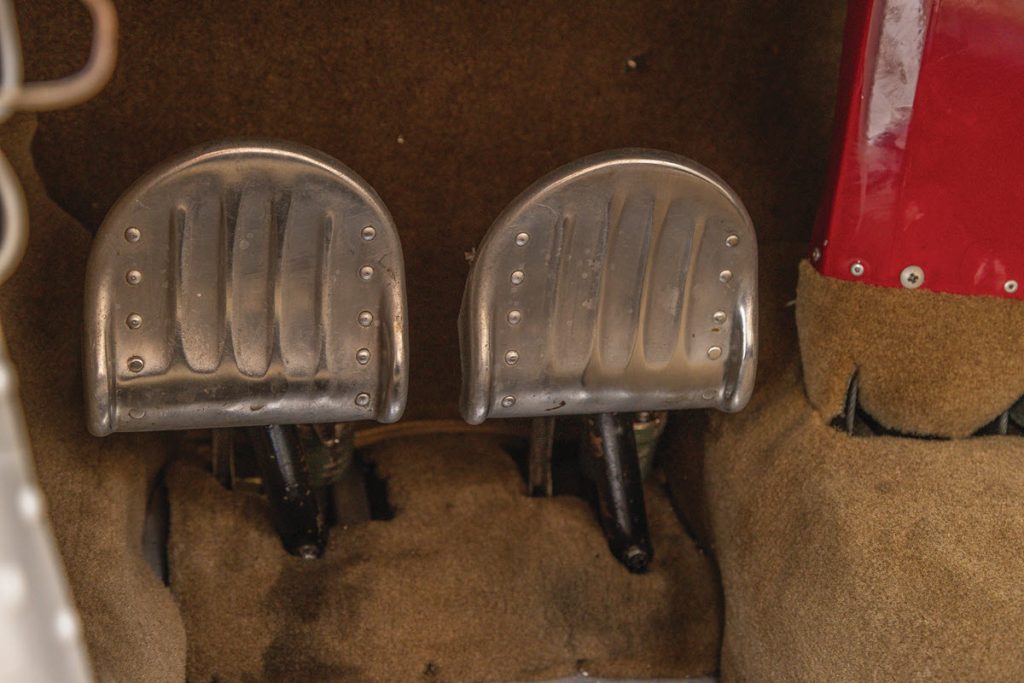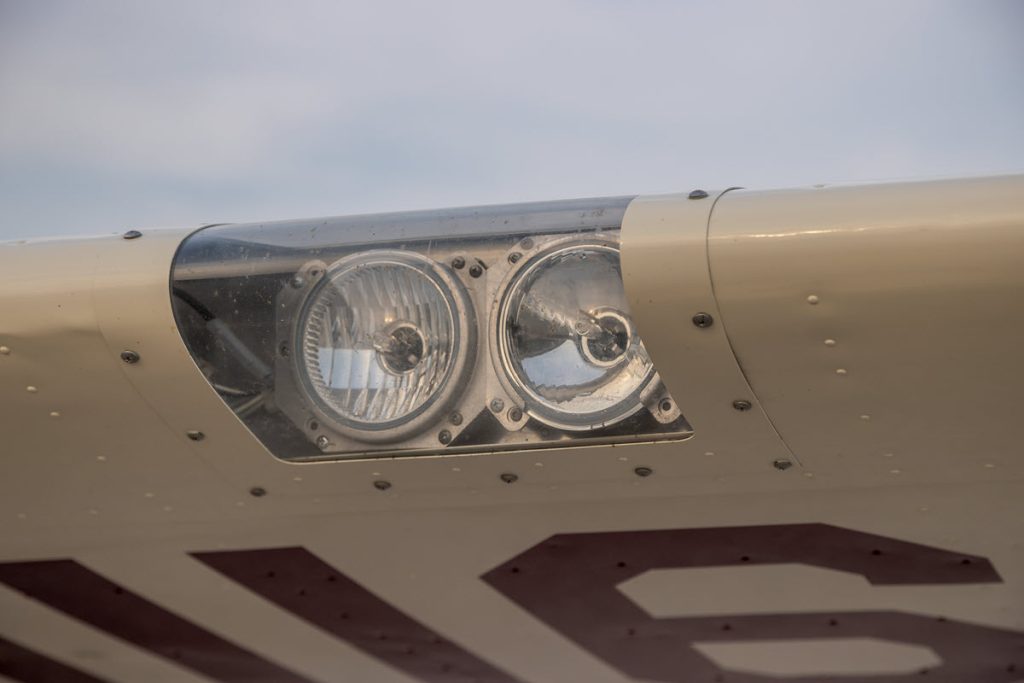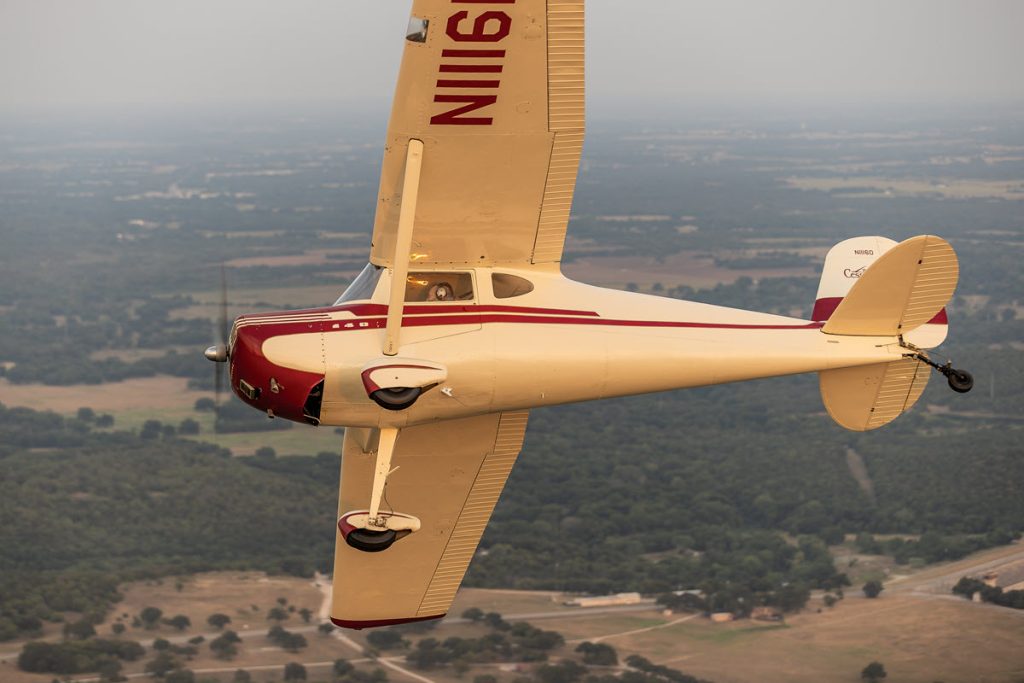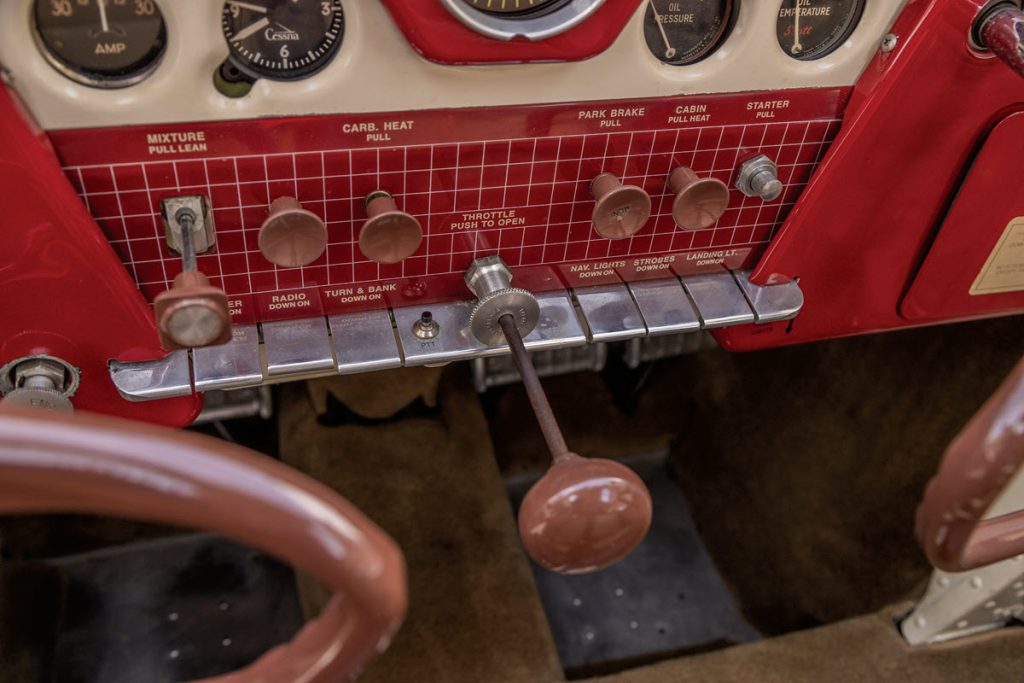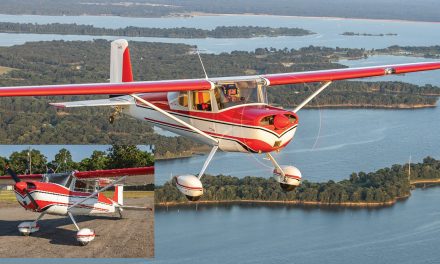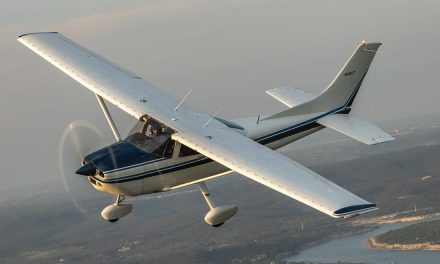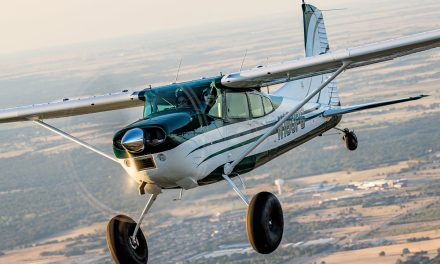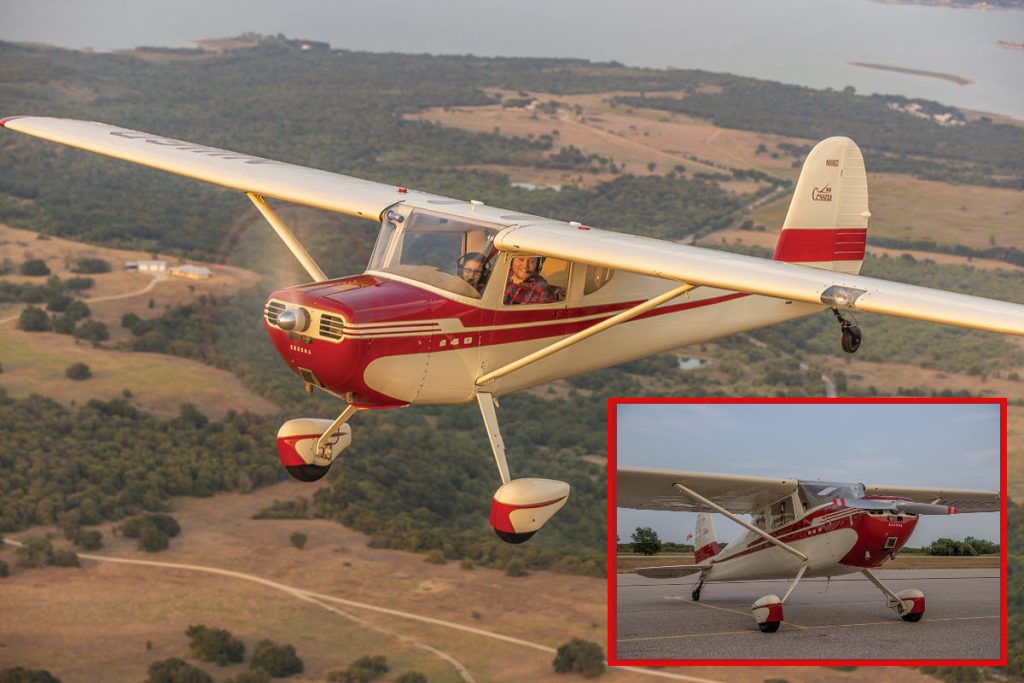
By Michelle Adserias
As a third generation pilot, Warren Oxman’s fascination with flight started early in life. His father had hoped to be a military pilot but his dreams were dashed when he didn’t pass the vision test. After several successful years in the computer industry, Warren’s parents purchased a 1959 K35 Bonanza. This airplane quickly became a business tool and a family commuter plane.
Warren was just three years old when the Bonanza joined their family. He spent many nights and weekends at Lee Airport in Maryland (KANP) with his family and the family airplane. Planes and flying became his primary interest. In fact, he was so eager to fly, Warren started researching ultralights when he was 14 years old. He wanted to take to the skies without having to wait for his instructor to be available. When his mother discovered Canada allowed 14-year-olds to solo, she made arrangements for him to take his first solo journey in North Bay, Ontario. He then soloed in the US on his sixteenth birthday and received his PPC when he was 17 (in his Cessna 140A). He took his check ride out of Lee Airport, where his fascination with flight was first fostered.
Finding the Right Airplane
Warren had a very clear picture of what his perfect plane would be. Although he hadn’t figured out which make and model met all his criteria, he knew it had to have certain features, a certain look and a specific setup.
He enjoyed flying the Cessna 150 Texas Taildragger he had his first few lessons in, but didn’t like the “normal” 150 as much. Warren briefly considered a Cessna 140 but wasn’t sure about the fabric wings. He didn’t have a hangar to store his plane in and was concerned how well the fabric would withstand the weather.
So, he began searching. He and his father looked at potential airplanes while they were at AirVenture in Oshkosh. Nothing seemed to fit the bill. Then, while they were at their insurance broker’s annual party, they met Ken and Lorraine Morris, a couple from Illinois. When the Morris’ overheard Warren’s description of his ideal airplane, they told Warren the Cessna 140A had everything he was looking for.
Ken and Lorraine Morris were active in the 120/140 association and were co-presidents at the time. They explained the Cessna 140A came from the factory with metal wings. And, in every other way, they felt this aircraft would meet Warren’s expectations. Furthermore, they were just beginning to restore one built in 1951.
The search was over.
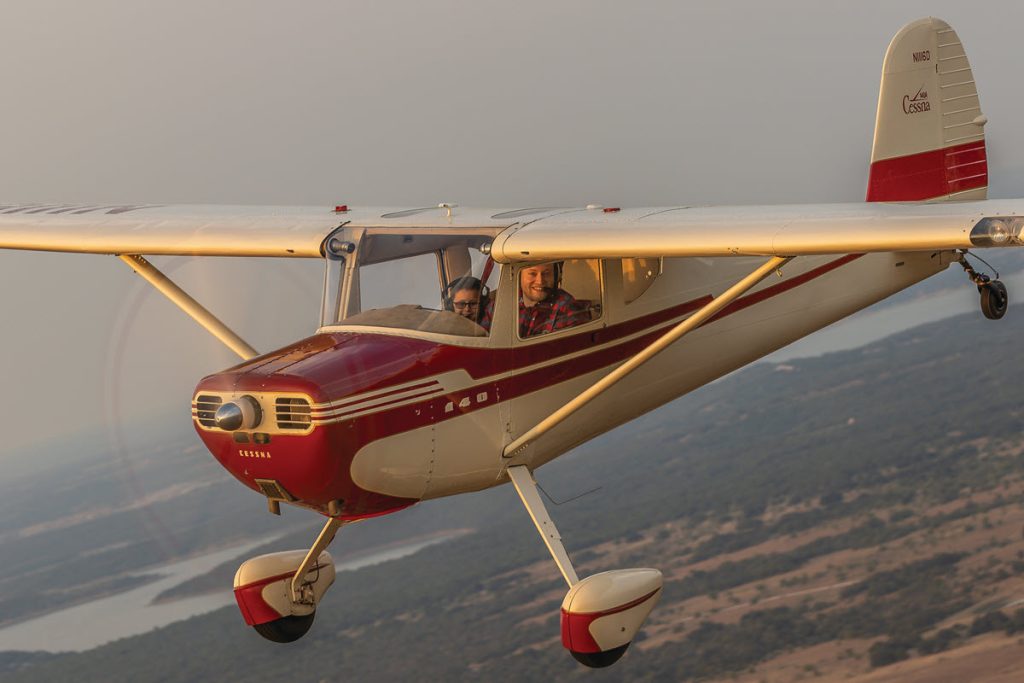
Restoring N1116D
When Warren purchased N1116D, it was in pieces – which was a good thing. “I loved the fact that it was a blank canvas,” Warren said. “We were able to configure it exactly how I wanted it.”
Lorraine documented and took photos of the restoration as things progressed. She and Warren talked and emailed frequently throughout the process. They crafted everything to Warren’s specifications, keeping it all original except the radio and transponder. Since he lived within the ADIZ (now known as SFRA), what his father referred to as “jail,” he was required to make frequent calls and reports while within the airspace, which demanded newer equipment.
Warren has been flying N1116D for 18 years now. Though it was originally intended to serve as a short-term “get some experience” airplane, it has become a well-loved part of his family’s life.
He’s made a few changes since the original restoration. Before LED lights were available, he added HID landing and taxi lights. The transponder was replaced with an ADS-B model and the Scott 2000 tailwheel was upgraded to a Scott 3200. He mainly lands his Cessna 140A on a grass strip, and the 2000 was prone to getting stuck in the soft Texas clay.
The most challenging job was repairing a doorpost crack, an issue which arises on these little birds fairly often after years of use, according to Warren. It took some time to find the right person for the task of disassembling the plane, making the repair, and reassembling it once again.
Finally, he did a top overhaul after 1000 hours of fly time. “All these things were done out of necessity,” Warren said. “I am happy to have done the work because it should be set for another 18-plus years before needing anything else.”
Fortunately, there are not many AD’s on these aircraft and most parts are readily available, though some of the 140A-specific parts are becoming scarce, since relatively few of this model were made. The most difficult part to track down was the right flap bracket. Warren often turns to Aero Performance and Aircraft Spruce, along with a few others, for parts.
The only glitch he ran into in the restoration process was a mouse. Yes, a mouse! The aircraft spent one day outdoors and a mouse managed to find its way inside and attack. The wool headliner looked like an ideal place to nest. The next day, Warren found “many holes” in the headliner – but no mouse. “Thankfully, the plane wasn’t its home of choice!”
Designed with Purpose
The Cessna 140A is very adept at doing what it was designed to do; make short flights and serve as a training airplane. As such, it has its limitations which the pilot needs to respect.
“Many people try to make these birds into a jack-of-all-trades and they just aren’t.” Warren switched the prop from a cruise pitch to a climb pitch, to get off the ground a little faster, but it is still far from a STOL performer – something they were never intended to be.
So, Warren and his wife, Katie, use N1116D for its intended purpose. They frequently take their three sons on short evening flights, when the wind has settled in for the night and the sun is low on the horizon. Although he has flown his Cessna 140A from Tennessee to Maryland, Warren prefers flying it in the pattern or to local airports. His favorite destination is Ranger Airfield (F23) in Ranger, Texas – the third oldest airfield in Texas and one with a rich history. Warren once had battery issues there and Jared Calvert invited him to leave the 140A as long as necessary. Jared not only kept it safely stored in a hangar, he found someone to troubleshoot the issue, then flew the plane home for Warren.
That’s not the only long trip this little airplane has taken. Warren and Katie went to a 120/140 convention held in the Northeast and participated in a scavenger hunt. They visited many beautiful airports in the area and settled on Aeroflex-Andover (K12N) in Andover, New Jersey as their favorite.
Though Warren primarily flies this aircraft, his wife took her first flight lesson in it and has taken a liking to it. His oldest son is getting better at handling the controls (under supervision) and has declared he’ll be ready to kick his dad out of the pilot’s seat any day now. He’s only six, so it will be a few years before that happens!
Warren’s aim is to fly 100 hours a year. He estimates it costs about $50/hour to fly, including all associated costs, and burns about 4.5 gallons an hour at 100 mph. Since the instruments are mostly original, it is equipped to fly VFR only.
A Happy Home
N1116D has found a happy home. It worked hard at a flight school for many years and has earned a more comfortable, leisurely lifestyle.
When Warren reached out to someone in the logbooks, the man eagerly shared some stories and photos from the plane’s past. One story stood out.
In the mid-1970s, this man walked away after landing the Cessna on its back, making it a good landing, though not a great one! It was repaired and returned to service. The very day it was back in the skies, after an uneventful flight, the airplane landed inverted once again – with the same man at the controls. Not wanting to strike out again, he put it into storage for a few years before he sold it. The aircraft was repaired and returned to the skies in the 1980s. Thankfully, that mishap has not been repeated under Warren’s watch, though his family did have one mishap they still chuckle about.
On one of their flights in 140A, their oldest son (who was two and a half at the time) was suffering in the 90-plus degree heat. Warren opened his son’s window and let him enjoy the “AC.” The young boy had smuggled a toy car on board in his pocket and decided to make his little car fly. Before Warren could stop him, the car disappeared out the window. He gave his dad a worried look, paused, then said, “Car go BOOM!”
Warren recalls, “His tone sounded both jovial and scared. In that moment, I had to decide how to handle the situation.” Warren decided it was best to laugh, partly because his son’s reaction was so cute and partly because he didn’t want his son to be sad about losing his car. When they landed, his son was eager to tell his mother, “Car go BOOM!”
No doubt, the family has many more memories to make in their Cessna 140A.
1951 Cessna 140A Specifications & Performance
| SPECIFICATIONS | |
| Engine | Continental C-90 |
| Displacement | 201 cubic in. |
| Min. Octane Fuel | 80 |
| No. Cylinders | 4 |
| TBO | 1,800 hrs. |
| HP | 85 |
| Propeller | McCauley |
| Type | F/P |
| Prop Specs | 49 in. |
| Landing Gear | Conv. |
| Mains | 6.00 x 6 |
| Tailwheel | unavailable |
| Gross Wt. | 1,450 lbs. |
| Ave. Empty Wt. | 810 lbs. |
| Ave. Useful Load | 640 lbs. |
| Baggage Capacity | 80 lbs. |
| Total Fuel, Std. | 25 gals |
| Total Fuel, Long | N/A gals |
| Wingspan | 33ft. 4 in. |
| Length | 21 ft. |
| Height | 6 ft. 7-1/4 in. |
| Wing Area | 159.5 sq. ft. |
| Wing Loading | 8.1 lbs./sq. ft. |
| Power Loading | 17 lbs./hp |
| Main Gear Track | 6ft. 5 in. |
| Doors | 2 |
| Seats | 2 |
| Cabin Width | 36 in. |
| PERFORMANCE | |
| Top Speed | 118 mph |
| Cruise Info | |
| Optimum | |
| Speed | 105 mph |
| Range | 450mi. |
| Endurance | 4.3 hrs. |
| Stall, Clean | 49 mph |
| Stall, Flaps | 45 mph |
| Take-off Roll | 663 ft. |
| Take-off 50 ft. | 1,850 ft. |
| Climb Best Rate | 640 fpm |
| Speed, Best ROC | 81 mph |
| Speed, Best Angle | 69 mph |
| Approach Speed, Clean | 65 mph |
| Approach Speed, Flaps | 60 mph |
| Landing, 50 ft. | 1,530 ft. |
| Landing Roll | 305 ft. |
| Service Ceiling | 15,500 ft. |


